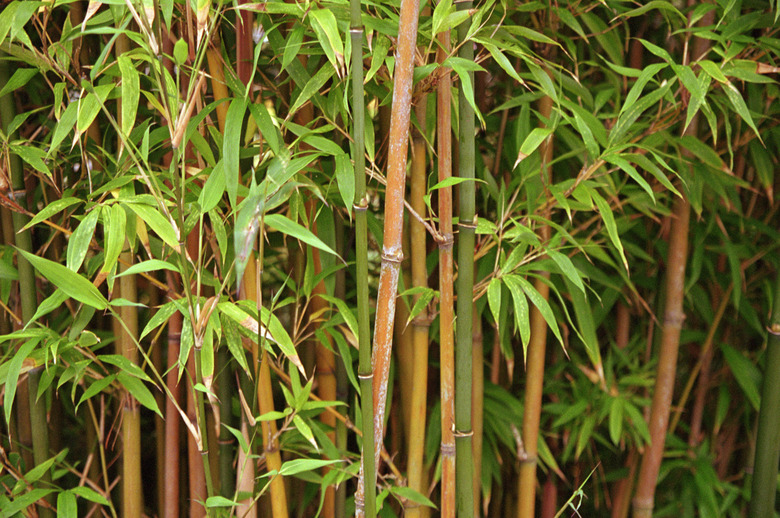How Often Do You Water Bamboo Plants?
Bamboo is a perennial grass that stays evergreen in the right climate. Bamboo grows best in warm, humid conditions. Native to Asia, bamboo is a renewable source of material for flooring, disposable products like plates and flatware and poles for various uses. Bamboo grows by rhizome and has a reputation for being aggressive.
About Bamboo
Bamboo is an important crop because of its versatility and the fact that it is a renewable resource. Bamboo grows especially well in hot, humid places like the U.S. southern states. With proper irrigation, bamboo will grow in warm, dry conditions as well. Bamboo is a very large variety of grass with usually hollow, jointed tubes. In cold areas, bamboo loses its leaves in winter, but in temperate conditions is evergreen.
Watering Newly Planted Bamboo
During its first year, it is important to protect a newly planted bamboo from drought and competition for water from weeds. Do not plant bamboo near lawns or other irrigated gardens, as these aggressive spreaders will make their way through or around almost any barrier seeking the water. After planting your bamboo, leave a depression after backfilling. This depression contains the water during irrigation. Fill the depression with water whenever the soil becomes dry, every two to three days when there is no rain.
Watering Established Bamboo
Once established, bamboo does not require as much water as in the first year. These plants should be watered every seven to 10 days when there is no rain. After the first year, bamboo can be divided and moved. If this happens, treat the transplants like newly planted bamboo, and water ever two to three days during times of drought. Since bamboo spreads aggressively, check its roots annually to ensure it isn't encroaching on parts of your garden where you don't want it to grow.
Watering Potted Bamboo
Any plant grown in a pot requires more water than a counterpart grown in the ground. The smaller amount of soil dries out more quickly. Check potted bamboo daily and water deeply when the soil is dry to a 1/4 inch. Potted bamboo does not need underground containment of its roots, making it more practical for some gardeners. Mulching around the roots of a potted bamboo keeps the soil moist.
